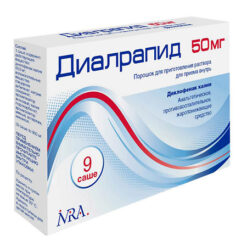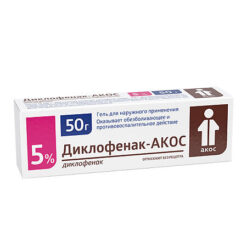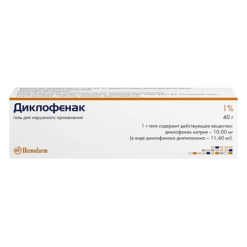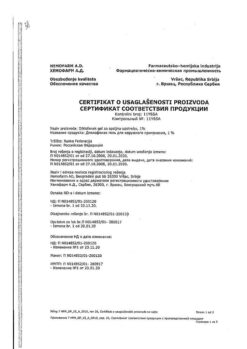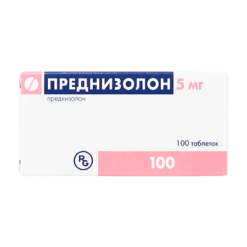No products in the cart.
Diclofenac, rectal suppositories 50 mg, 10 pcs.
€1.00
Out of stock
(E-mail when Stock is available)
Description
Non-steroidal anti-inflammatory drug, derivative of phenylacetic acid; has anti-inflammatory analgesic and antipyretic effects. By indiscriminate inhibiting cyclooxygenase 1 and cyclooxygenase 2 it disrupts arachidonic acid metabolism, decreases quantity of prostaglandins in inflammation focus.
It is most effective for pain of inflammatory nature. Like all non-steroidal anti-inflammatory drugs it has anti-aggregate activity.
Pharmacokinetics:
The maximum concentration in blood plasma is created after 30-40 minutes and is in linear dependence on the dose used. No changes in pharmacokinetics of diclofenac against the background of repeated administration are observed. Binding with plasma proteins – not more than 99 % (most of it is bound with albumin).
It penetrates into synovial fluid. Maximal concentration in synovial fluid is observed 2-4 hours later than in plasma. Half-life period of synovial fluid is 3-6 hours (concentration of active substance in synovial fluid is higher 4-6 hours after drug administration than in plasma and stays higher during 12 hours). The relationship between the concentration of the drug in the synovial fluid and the clinical efficacy of the drug is not clear.
Metabolism occurs as a result of multiple or single hydroxylation and conjugation with glucuronic acid. The P450 enzyme system CYP2C9 is involved in metabolism of the drug. Pharmacological activity of metabolites is lower than that of diclofenac.
Systemic clearance is 350 ml/min distribution volume is 550 ml/kg. Plasma elimination half-life is 2 hours. 65% of the administered dose is excreted as metabolites by kidneys; less than 1% is excreted unchanged, the rest of the dose is excreted as metabolites with bile.
In patients with severe renal insufficiency (creatinine clearance less than 10 ml/min) excretion of metabolites with bile is increased, while increase of their concentration in blood is not observed.
In patients with chronic hepatitis or compensated liver cirrhosis pharmacokinetic parameters of diclofenac are not changed. Diclofenac penetrates into breast milk.
Indications
Indications
Active ingredient
Active ingredient
Composition
Composition
How to take, the dosage
How to take, the dosage
Interaction
Interaction
Special Instructions
Special Instructions
Contraindications
Contraindications
Side effects
Side effects
Frequently, 1-10%; sometimes, 01-1%; rarely, 001-01%; very rarely, less than 0001% including individual cases.
Digestive system disorders: frequent – epigastric pain nausea vomiting diarrhea dyspepsia flatulence anorexia increased aminotransferase activity; rare – gastritis proctitis bleeding from the GI tract (vomiting with blood melena diarrhea with blood admixture) GI ulcers (with or without bleeding or perforation) hepatitis jaundice liver function disorder; very rare – stomatitis glossitis esophageal damage diaphragm-like intestinal strictures nonspecific hemorrhagic colitis exacerbation of ulcerative colitis or Crohn’s disease constipation pancreatitis fulminant hepatitis exacerbation of hemorrhoids.
Nervous system: common – headache dizziness; rare – somnolence; very rare – sensory disorders including paresthesia memory disorders tremor cramps anxiety cerebrovascular disorders aseptic meningitis disorientation depression insomnia nightmares irritability mental disorders.
Sense organs: often – vertigo; very rare – visual impairment (blurred vision diplopia) hearing impairment tinnitus impairment of the sense of taste.
Urinary system disorders: very rarely – acute renal failure hematuria proteinuria interstitial nephritis nephrotic syndrome papillary necrosis.
Hematopoietic organs: very rarely – thrombocytopenia leukopenia hemolytic and aplastic anemia agranulocytosis.
Allergic reactions: anaphylactic/anaphylactoid reactions including significant decrease in blood pressure and shock; very rare – angioedema (including facial).
Cardiovascular system disorders: very rare – palpitations chest pain increased blood pressure vasculitis heart failure myocardial infarction.
Respiratory system disorders: rare – bronchial asthma (including dyspnea); very rare – pneumonitis.
The skin: often – skin rash; rarely – urticaria; very rare – bullous rash eczema including multiforme and Stevens-Johnson syndrome Lyell syndrome exfoliative dermatitis itching hair loss photosensitization purpura including allergic.
Local reactions when rectal administration: irritation of the rectal mucosa mucous discharge with a touch of blood pain during defecation rectal bleeding.
Overdose
Overdose
Similarities
Similarities
Additional information
| Manufacturer | Dalkhimpharm, Russia |
|---|---|
| Medication form | rectal suppositories |
| Brand | Dalkhimpharm |
Other forms…
Related products
Buy Diclofenac, rectal suppositories 50 mg, 10 pcs. with delivery to USA, UK, Europe and over 120 other countries.




